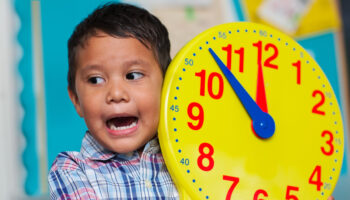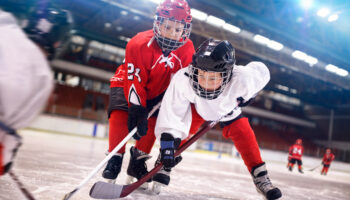By Stefanie Camoni
School-age programs continue to grow due to the demand of before and after school care. How do we serve our oldest children? What do we do with them after school ends? What is our role? How do we know we are giving them what they need?
The questions posed are important ones. Thankfully, there are various program observation instruments that define what quality looks like in these settings. These three POIs are approved for use to meet Keystone Stars standards EC 3.4.5 and EC 3.4.6. We will briefly examine some observation instruments that can be used not only during out of school time but during the summer months when school-age children attend all day.
Environment Rating Scale: School-Age Care Environment Rating Scale-Updated (SACERS-U®)
SACERS-U is an assessment tool used in classrooms where younger school-age (including kindergarten) and/or older school-age children are enrolled. In classrooms of kindergarten only enrollment the ECERS-R or ECERS-3 tool will be used. In classrooms where school-age children are enrolled with preschool children, the assessment tool will be determined by the age level that represents the majority of children in the group.*
SACERS-U focuses on the typical daily experiences of children in school-age settings. The assessment considers how teacher engagement, the spaces and equipment used by the children, accessible play materials, and children’s activities combine to enhance learning. The scale consists of 47 items that are organized into 7 subscales:
- Space and Furnishings
- Health and Safety
- Activities
- Interactions
- Program Structure
- Staff Development
- Special Needs Supplementary Items
Items include observable and/or reportable indicators that reflect consistently occurring quality practices and provisions.
The ERS assessment is primarily a 3 to 4-hour observation in the indoor and outdoor spaces used by children. The assessment may also consider other onsite and offsite space and information shared during a teacher interview.
Classroom Assessment Scoring System K-3 (CLASS K-3®)
CLASS K-3 is an assessment tool used in classrooms where younger school-age (including kindergarten) and/or older school-age children are enrolled. It focuses on interactions between teachers and children and how teacher engagement, classroom materials, and children’s activities combine to enhance learning. CLASS K-3 supports a consistent approach to measuring quality practices in school-age environments.
CLASS K-3 is comprised of domains and dimensions that reflect quality classroom interactions. Those domains include Responsive Caregiving, Emotional Support, Classroom Organization, Instructional Support, Emotional and Behavior Support, and Engaged Support for Learning. The dimensions include easily observable behavior markers that reflect consistently occurring quality practices in the classroom.
Assessments occur in four 15-20-minute observation cycles. There is no teacher interview that occurs.
School-Age Program Quality Assessment (SPQA)
The School-Age PQA can be used in center or school-based settings including full day out of school time and before and after school sites serving children in grades K-6.
The SPQA focuses on staff practices and experiences of children by using an assess-plan-improve sequence. The approach is based on interconnected domains to support children’s experiences with intentional planning in the following areas:
- Physical safety, emotional safety, and inclusive practices
- Supportive environment through welcoming, conflict resolution, active learning, encouragement, and skill-building
- Interaction through cooperative learning and leadership opportunities
- Higher order engagement through choice, planning and reflection
Assessments can range from one to three hours. An interview takes place before or after the observation.
Still not sure which program observation instrument is right for your program? Reach out to a program quality assessor or your quality coach to learn more about how you can choose the right POI for your program.
SACERS-U Environment Rating Scales Institute (ERSI)
Program Quality Assessment Professional Development Catalog
School-Age Program Quality Assessment David P. Weikart Center for Youth Program Quality
* Age ranges for SACERS-U have been aligned to Pennsylvania Department of Human Service Child Care regulations age levels.




